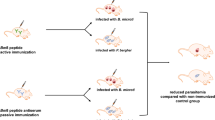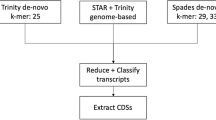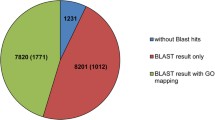Abstract
Balamuthia mandrillaris is the causative agent of granulomatous amoebic encephalitis, a rare and often fatal infection affecting the central nervous system. The amoeba is isolated from diverse environmental sources and can cause severe infections in both immunocompromised and immunocompetent individuals. Given the limited understanding of B. mandrillaris, our research aimed to explore its protein profile, identifying potential immunogens crucial for early granulomatous amoebic encephalitis diagnosis. Cultures of B. mandrillaris and other amoebas were grown under axenic conditions, and total amoebic extracts were obtained. Proteomic analyses, including two-dimensional electrophoresis and mass spectrometry, were performed. A 50-kDa band showed a robust recognition of antibodies from immunized BALB/c mice; peptides contained in this band were matched with elongation factor-1 alpha, which emerged as a putative key immunogen. Besides, lectin blotting revealed the presence of glycoproteins in B. mandrillaris, and confocal microscopy demonstrated the focal distribution of the 50-kDa band throughout trophozoites. Cumulatively, these observations suggest the participation of the 50-kDa band in adhesion and recognition mechanisms. Thus, these collective findings demonstrate some protein characteristics of B. mandrillaris, opening avenues for understanding its pathogenicity and developing diagnostic and therapeutic strategies.





Similar content being viewed by others
Data availability
No datasets were generated or analysed during the current study.
References
Abbas W, Kumar A, Herbein G (2015) The eEF1A proteins: at the crossroads of oncogenesis, apoptosis, and viral infections. Front Oncol 5:75. https://doi.org/10.3389/fonc.2015.00075
Andersen GR, Nissen P, Nyborg J (2003) Elongation factors in protein biosynthesis. Trends Biochem Sci 28(8):434–441. https://doi.org/10.1016/s0968-0004(03)00162-2
Behera HS, Satpathy G, Tripathi M (2016) Isolation and genotyping of Acanthamoeba spp. from Acanthamoeba meningitis/ meningoencephalitis (AME) patients in India. Parasit Vectors 9(1):442. https://doi.org/10.1186/s13071-016-1729-5
Booton GC, Carmichael JR, Visvesvara GS, Byers TJ, Fuerst PA (2003) Genotyping of Balamuthia mandrillaris based on nuclear 18S and mitochondrial 16S rRNA genes. Am J Trop Med Hyg 68(1):65–69
Burger G, Plante I, Lonergan KM, Gray MW (1995) The mitochondrial DNA of the amoeboid protozoon, Acanthamoeba castellanii: complete sequence, gene content and genome organization. J Mol Biol 245(5):522–537. https://doi.org/10.1006/jmbi.1994.0043
Carrasco-Yepez M et al (2013) Naegleria fowleri glycoconjugates with residues of α-D-mannose are involved in adherence of trophozoites to mouse nasal mucosa. Parasitol Res 112(10):3615–3625. https://doi.org/10.1007/s00436-013-3549-2
Carrasco-Yepez M et al (2014) Intranasal coadministration of cholera toxin with amoeba lysates modulates the secretion of IgA and IgG antibodies, production of cytokines and expression of pIgR in the nasal cavity of mice in the model of Naegleria fowleri meningoencephalitis. Exp Parasitol 145(Suppl):S84-92. https://doi.org/10.1016/j.exppara.2014.04.002
Casado-Vela J et al (2011) Lights and shadows of proteomic technologies for the study of protein species including isoforms, splicing variants and protein post-translational modifications. Proteomics 11(14):590–603. https://doi.org/10.1002/pmic.201000287
Caumo KS et al (2014) Proteomic profiling of the infective trophozoite stage of Acanthamoeba polyphaga. Acta Trop 140:166–172. https://doi.org/10.1016/j.actatropica.2014.08.009
Chuang SM, Chen L, Lambertson D, Anand M, Kinzy TG, Madura K (2005) Proteasome-mediated degradation of cotranslationally damaged proteins involves translation elongation factor 1A. Mol Cell Biol 25(1):403–413. https://doi.org/10.1128/mcb.25.1.403-413.2005
Condeelis J (1995) Elongation factor 1 alpha, translation and the cytoskeleton. Trends Biochem Sci 20(5):169–170. https://doi.org/10.1016/s0968-0004(00)88998-7
Das S, Stortz JF, Meissner M, Periz J (2021) The multiple functions of actin in apicomplexan parasites. Cell Microbiol 23(11):e13345. https://doi.org/10.1111/cmi.13345
Demarta-Gatsi C et al (2019) Histamine releasing factor and elongation factor 1 alpha secreted via malaria parasites extracellular vesicles promote immune evasion by inhibiting specific T cell responses. Cell Microbiol 21(7):e13021. https://doi.org/10.1111/cmi.13021
Demma M, Warren V, Hock R, Dharmawardhane S, Condeelis J (1990) Isolation of an abundant 50,000-dalton actin filament bundling protein from Dictyostelium amoebae. J Biol Chem 265(4):2286–2291
Donaldson JG, Honda A, Weigert R (2005) Multiple activities for Arf1 at the Golgi complex. Biochim Biophys Acta 1744(3):364–373. https://doi.org/10.1016/j.bbamcr.2005.03.001
Duarte Escalante E, Frías De León MG, Martínez García LG, Herrera J, Acosta Altamirano G, Cabello C, Palma G, Reyes Montes MDR (2018) Selection of Specific Peptides for Coccidioides spp. Obtained from Antigenic Fractions through SDS-PAGE and Western Blot Methods by the Recognition of Sera from Patients with Coccidioidomycosis. Molecules 23(12):3145. https://doi.org/10.3390/molecules23123145
Fukai F (2017) New type of antitumor agent targeting the cell adhesion molecule, integrin. Yakugaku Zasshi 137(2):137–139. https://doi.org/10.1248/yakushi.16-00229-3
Garate M, Cao Z, Bateman E, Panjwani N (2004) Cloning and characterization of a novel mannose-binding protein of Acanthamoeba. J Biol Chem 279(28):29849–29856. https://doi.org/10.1074/jbc.M402334200
Gotthardt D, Blancheteau V, Bosserhoff A, Ruppert T, Delorenzi M, Soldati T (2006) Proteomics fingerprinting of phagosome maturation and evidence for the role of a Galpha during uptake. Mol Cell Proteomics 5(12):2228–2243. https://doi.org/10.1074/mcp.M600113-MCP200
Greninger AL et al (2015) Clinical metagenomic identification of Balamuthia mandrillaris encephalitis and assembly of the draft genome: the continuing case for reference genome sequencing. Genome Med 7:113. https://doi.org/10.1186/s13073-015-0235-2
Greub G, Raoult D (2004) Microorganisms resistant to free-living amoebae. Clin Microbiol Rev 17(2):413–433. https://doi.org/10.1128/cmr.17.2.413-433.2004
Guetta D, Langou K, Grunwald D, Klein G, Aubry L (2010) FYVE-dependent endosomal targeting of an arrestin-related protein in amoeba. PLoS One 5(12):e15249. https://doi.org/10.1371/journal.pone.0015249
Gutiérrez-Sánchez M, Carrasco-Yepez MM, Herrera-Díaz J, Rojas-Hernández S (2020) Identification of differential protein recognition pattern between Naegleria fowleri and Naegleria lovaniensis. Parasite Immunol 42(6):e12715. https://doi.org/10.1111/pim.12715
Gutiérrez-Sánchez M, Carrasco-Yepez MM, Correa-Basurto J, Ramírez-Salinas GL, Rojas-Hernández S (2023) Two MP2CL5 antigen vaccines from Naegleria fowleri stimulate the immune response against meningitis in the BALB/c model. Infect Immun 91(7):e0018123. https://doi.org/10.1128/iai.00181-23
Hajikhezri Z, Darweesh M, Akusjärvi G, Punga T (2020) Role of CCCH-type zinc finger proteins in human adenovirus infections. Viruses 12(11):1322. https://doi.org/10.3390/v12111322
Han KL, Lee HJ, Shin MH, Shin HJ, Im KI, Park SJ (2004) The involvement of an integrin-like protein and protein kinase C in amoebic adhesion to fibronectin and amoebic cytotoxicity. Parasitol Res 94(1):53–60. https://doi.org/10.1007/s00436-004-1158-9
Hayer-Hartl M, Bracher A, Hartl FU (2016) The GroEL-GroES chaperonin machine: a nano-cage for protein folding. Trends Biochem Sci 41(1):62–76. https://doi.org/10.1016/j.tibs.2015.07.009
Herman EK, Greninger AL, Visvesvara GS, Marciano-Cabral F, Dacks JB, Chiu CY (2013) The mitochondrial genome and a 60-kb nuclear DNA segment from Naegleria fowleri, the causative agent of primary amoebic meningoencephalitis. J Eukaryot Microbiol 60(2):179–191. https://doi.org/10.1111/jeu.12022
Herrera-Díaz J, Jelezova MK, Cruz-García F, Dinkova TD (2018) Protein disulfide isomerase (PDI1-1) differential expression and modification in Mexican malting barley cultivars. PLoS One 13(11):e0206470. https://doi.org/10.1371/journal.pone.0206470
Ishii N (2017) GroEL and the GroEL-GroES complex. Subcell Biochem 83:483–504. https://doi.org/10.1007/978-3-319-46503-6_17
Itagaki K et al (2012) Eukaryotic translation elongation factor 1A induces anoikis by triggering cell detachment. J Biol Chem 287(19):16037–16046. https://doi.org/10.1074/jbc.M111.308122
Kiderlen AF, Laube U (2004) Balamuthia mandrillaris, an opportunistic agent of granulomatous amebic encephalitis, infects the brain via the olfactory nerve pathway. Parasitol Res 94(1):49–52. https://doi.org/10.1007/s00436-004-1163-z
Kiraga J et al (2007) The relationships between the isoelectric point and: length of proteins, taxonomy and ecology of organisms. BMC Genomics 8:163. https://doi.org/10.1186/1471-2164-8-163
Kucerova Z, Sriram R, Wilkins PP, Visvesvara GS (2011) Identification of antigenic targets for immunodetection of Balamuthia mandrillaris infection. Clin Vaccine Immunol 18(8):1297–1301. https://doi.org/10.1128/cvi.05082-11
Labruyère E, Guillén N (2006) Host tissue invasion by Entamoeba histolytica is powered by motility and phagocytosis. Arch Med Res 37(2):253–258. https://doi.org/10.1016/j.arcmed.2005.10.005
Laity JH, Lee BM, Wright PE (2001) Zinc finger proteins: new insights into structural and functional diversity. Curr Opin Struct Biol 11(1):39–46. https://doi.org/10.1016/s0959-440x(00)00167-6
Lamberti A, Caraglia M, Longo O, Marra M, Abbruzzese A, Arcari P (2004) The translation elongation factor 1A in tumorigenesis, signal transduction and apoptosis: review article. Amino Acids 26(4):443–448. https://doi.org/10.1007/s00726-004-0088-2
Lares-Jiménez LF, Booton GC, Lares-Villa F, Velázquez-Contreras CA, Fuerst PA (2014) Genetic analysis among environmental strains of Balamuthia mandrillaris recovered from an artificial lagoon and from soil in Sonora, Mexico. Exp Parasitol 145(Suppl):S57-61. https://doi.org/10.1016/j.exppara.2014.07.007
Lares-Jiménez LF, Borquez-Román MA, Alfaro-Sifuentes R, Meza-Montenegro MM, Casillas-Hernández R, Lares-Villa F (2018) Detection of serum antibodies in children and adolescents against Balamuthia mandrillaris, Naegleria fowleri and Acanthamoeba T4. Exp Parasitol 189:28–33. https://doi.org/10.1016/j.exppara.2018.04.011
Li Z et al (2009) Translation elongation factor 1A is a component of the tombusvirus replicase complex and affects the stability of the p33 replication co-factor. Virology 385(1):245–260. https://doi.org/10.1016/j.virol.2008.11.041
Li YH, Liu TB (2020) Zinc finger proteins in the human fungal pathogen Cryptococcus neoformans. Int J Mol Sci 21(4):1361. https://doi.org/10.3390/ijms21041361
Martinez AJ, Visvesvara GS (1997) Free-living, amphizoic and opportunistic amebas. Brain Pathol 7(1):583–598. https://doi.org/10.1111/j.1750-3639.1997.tb01076.x
Matin A, Jeong SR, Stins M, Khan NA (2007a) Effects of human serum on Balamuthia mandrillaris interactions with human brain microvascular endothelial cells. J Med Microbiol 56(Pt 1):30–35. https://doi.org/10.1099/jmm.0.46847-0
Matin A, Siddiqui R, Jung SY, Kim KS, Stins M, Khan NA (2007b) Balamuthia mandrillaris interactions with human brain microvascular endothelial cells in vitro. J Med Microbiol 56(Pt 8):1110–1115. https://doi.org/10.1099/jmm.0.47134-0
Matin A, Siddiqui R, Jayasekera S, Khan NA (2008) Increasing importance of Balamuthia mandrillaris. Clin Microbiol Rev 21(3):435–448. https://doi.org/10.1128/cmr.00056-07
Meza I (2000) Extracellular matrix-induced signaling in Entamoeba histolytica: its role in invasiveness. Parasitol Today 16(1):23–28. https://doi.org/10.1016/s0169-4758(99)01586-0
Mittal SO, Alsinaidi O (2017) Teaching NeuroImages: Balamuthia mandrillaris amebic encephalitis: clinical-radiologic-pathologic correlation. Neurology 88(18):e183. https://doi.org/10.1212/wnl.0000000000003891
Münter S et al (2009) Plasmodium sporozoite motility is modulated by the turnover of discrete adhesion sites. Cell Host Microbe 6(6):551–562. https://doi.org/10.1016/j.chom.2009.11.007
O'Day DH, Taylor RJ, Myre MA (2020) Calmodulin and calmodulin binding proteins in Dictyostelium: a primer. Int J Mol Sci 21(4):1210. https://doi.org/10.3390/ijms21041210
Ooi CE, Dell’Angelica EC, Bonifacino JS (1998) ADP-ribosylation factor 1 (ARF1) regulates recruitment of the AP-3 adaptor complex to membranes. J Cell Biol 142(2):391–402. https://doi.org/10.1083/jcb.142.2.391
Page FC (1988) A new key to freshwater and soil Gymnamoebae Freshwater Biological Association, Ambleside, Cumbria, UK, p 122
Phan IQ et al (2021) The transcriptome of Balamuthia mandrillaris trophozoites for structure-guided drug design. Sci Rep 11(1):21664. https://doi.org/10.1038/s41598-021-99903-8
Pittman YR, Kandl K, Lewis M, Valente L, Kinzy TG (2009) Coordination of eukaryotic translation elongation factor 1A (eEF1A) function in actin organization and translation elongation by the guanine nucleotide exchange factor eEF1Balpha. J Biol Chem 284(7):4739–4747. https://doi.org/10.1074/jbc.M807945200
Price HP, Stark M, Smith DF (2007) Trypanosoma brucei ARF1 plays a central role in endocytosis and golgi-lysosome trafficking. Mol Biol Cell 18(3):864–873. https://doi.org/10.1091/mbc.e06-08-0736
Ransom-Hodgkins WD, Brglez I, Wang X, Boss WF (2000) Calcium-regulated proteolysis of eEF1A. Plant Physiol 122(3):957–965. https://doi.org/10.1104/pp.122.3.957
Raucher D et al (2000) Phosphatidylinositol 4,5-bisphosphate functions as a second messenger that regulates cytoskeleton-plasma membrane adhesion. Cell 100(2):221–228. https://doi.org/10.1016/s0092-8674(00)81560-3
Reiner DJ, Lundquist EA (2018) Small GTPases. WormBook 2018:1–65. https://doi.org/10.1895/wormbook.1.67.2
Rocha-Azevedo B, Jamerson M, Cabral GA, Silva-Filho FC, Marciano-Cabral F (2007) The interaction between the amoeba Balamuthia mandrillaris and extracellular matrix glycoproteins in vitro. Parasitology 134(Pt 1):51–58. https://doi.org/10.1017/s0031182006001272
Rocha-Azevedo BD, Jamerson M, Cabral GA, Silva-Filho FC, Marciano-Cabral F (2009) Acanthamoeba interaction with extracellular matrix glycoproteins: biological and biochemical characterization and role in cytotoxicity and invasiveness. J Eukaryot Microbiol 56(3):270–278. https://doi.org/10.1111/j.1550-7408.2009.00399.x
Rojas-Hernández S, Rodríguez-Monroy MA, López-Revilla R, Reséndiz-Albor AA, Moreno-Fierros L (2004) Intranasal coadministration of the Cry1Ac protoxin with amoebal lysates increases protection against Naegleria fowleri meningoencephalitis. Infect Immun 72(8):4368–4375. https://doi.org/10.1128/iai.72.8.4368-4375.2004
Rojas-Ortega DA et al (2023) Role of FcγRIII in the nasal cavity of BALB/c mice in the primary amebic meningoencephalitis protection model. Parasitol Res 122(5):1087–1105. https://doi.org/10.1007/s00436-023-07810-w
Rosowski EE, Deng Q, Keller NP, Huttenlocher A (2016) Rac2 functions in both neutrophils and macrophages to mediate motility and host defense in larval zebrafish. J Immunol 197(12):4780–4790. https://doi.org/10.4049/jimmunol.1600928
Russ M, Croft D, Ali O, Martinez R, Steimle PA (2006) Myosin heavy-chain kinase A from Dictyostelium possesses a novel actin-binding domain that cross-links actin filaments. Biochem J 395(2):373–383. https://doi.org/10.1042/bj20051376
Schuster FL et al (2003) Environmental isolation of Balamuthia mandrillaris associated with a case of amebic encephalitis. J Clin Microbiol 41(7):3175–3180. https://doi.org/10.1128/jcm.41.7.3175-3180.2003
Schuster FL, Yagi S, Wilkins PP, Gavali S, Visvesvara GS, Glaser CA (2008) Balamuthia mandrillaris, agent of amebic encephalitis: detection of serum antibodies and antigenic similarity of isolates by enzyme immunoassay. J Eukaryot Microbiol 55(4):313–320. https://doi.org/10.1111/j.1550-7408.2008.00333.x
Siddiqui R, Khan NA (2015) Balamuthia mandrillaris: morphology, biology, and virulence. Trop Parasitol 5(1):15–22. https://doi.org/10.4103/2229-5070.149888
Swanson JA (2008) Shaping cups into phagosomes and macropinosomes. Nat Rev Mol Cell Biol 9(8):639–649. https://doi.org/10.1038/nrm2447
Takei K et al (2018) An acute case of granulomatous amoebic encephalitis-Balamuthia mandrillaris infection. Intern Med 57(9):1313–1316. https://doi.org/10.2169/internalmedicine.0011-17
Thomas V, McDonnell G, Denyer SP, Maillard JY (2010) Free-living amoebae and their intracellular pathogenic microorganisms: risks for water quality. FEMS Microbiol Rev 34(3):231–259. https://doi.org/10.1111/j.1574-6976.2009.00190.x
Uchida H, Kondo A, Yoshimura Y, Mazaki Y, Sabe H (2001) PAG3/Papalpha/KIAA0400, a GTPase-activating protein for ADP-ribosylation factor (ARF), regulates ARF6 in Fcgamma receptor-mediated phagocytosis of macrophages. J Exp Med 193(8):955–966. https://doi.org/10.1084/jem.193.8.955
Visvesvara GS et al (1990) Leptomyxid ameba, a new agent of amebic meningoencephalitis in humans and animals. J Clin Microbiol 28(12):2750–2756. https://doi.org/10.1128/jcm.28.12.2750-2756.1990
Visvesvara GS, Moura H, Schuster FL (2007) Pathogenic and opportunistic free-living amoebae: Acanthamoeba spp., Balamuthia mandrillaris, Naegleria fowleri, and Sappinia diploidea. FEMS Immunol Med Microbiol 50(1):1–26. https://doi.org/10.1111/j.1574-695X.2007.00232.x
Winiecka-Krusnell J, Linder E (2001) Bacterial infections of free-living amoebae. Res Microbiol 152(7):613–619. https://doi.org/10.1016/s0923-2508(01)01240-2
Yang W, Boss WF (1994) Regulation of phosphatidylinositol 4-kinase by the protein activator PIK-A49. Activation requires phosphorylation of PIK-A49. J Biol Chem 269(5):3852–7
Yang F, Demma M, Warren V, Dharmawardhane S, Condeelis J (1990) Identification of an actin-binding protein from Dictyostelium as elongation factor 1a. Nature 347(6292):494–496. https://doi.org/10.1038/347494a0
Yang FC et al (2001) Rac and Cdc42 GTPases control hematopoietic stem cell shape, adhesion, migration, and mobilization. Proc Natl Acad Sci U S A 98(10):5614–5618. https://doi.org/10.1073/pnas.101546898
Yera H et al (2015) In vitro growth, cytopathic effects and clearance of monolayers by clinical isolates of Balamuthia mandrillaris in human skin cell cultures. Exp Parasitol 156:61–67. https://doi.org/10.1016/j.exppara.2015.05.004
Yi Z et al (2021) Balamuthia mandrillaris encephalitis in a child: case report and literature review. Diagn Microbiol Infect Dis 100(4):115180. https://doi.org/10.1016/j.diagmicrobio.2020.115180
Zhong R, Burk DH, Nairn CJ, Wood-Jones A, Morrison WH 3rd, Ye ZH (2005) Mutation of SAC1, an Arabidopsis SAC domain phosphoinositide phosphatase, causes alterations in cell morphogenesis, cell wall synthesis, and actin organization. Plant Cell 17(5):1449–1466. https://doi.org/10.1105/tpc.105.031377
Zhou H, Guan Y, Feng M, Fu Y, Tachibana H, Cheng X (2020) Evaluation on elongation factor 1 alpha of Entamoeba histolytica interaction with the intermediate subunit of the Gal/GalNAc lectin and actin in phagocytosis. Pathogens 9(9):702. https://doi.org/10.3390/pathogens9090702
Zysset-Burri DC et al (2014) Genome-wide identification of pathogenicity factors of the free-living amoeba Naegleria fowleri. BMC Genomics 15(1):496. https://doi.org/10.1186/1471-2164-15-496
Acknowledgements
The authors would like to thank Jorge Herrera-Díaz for his assistance in conducting the protein analysis through mass spectrometry.
Funding
This research was funded by the Consejo Nacional de Humanidades Ciencias y Tecnologías (grant no. 289026) and the Instituto Tecnológico de Sonora (PROFAPI_2018_041 and PROFAPI_2019_0057).
Author information
Authors and Affiliations
Contributions
Conceptualization: Fernando Lares-Villa, Saúl Rojas-Hernández and Rosalía Alfaro-Sifuentes. Data curation: Saúl Rojas-Hernández, María Maricela Carrasco-Yépez, Fernando Lares-Villa, Luis Fernando Lares-Jiménez and Rosalía Alfaro-Sifuentes. Formal analysis: Saúl Rojas-Hernández, María Maricela Carrasco-Yépez and Rosalía Alfaro-Sifuentes. Funding acquisition: Fernando Lares-Villa, Luis Fernando Lares-Jiménez, Saúl Rojas-Hernández and María Maricela Carrasco-Yépez. Investigation: Saúl Rojas-Hernández, Diego Alexander Rojas-Ortega, Luis Fernando Lares-Jiménez and Rosalía Alfaro-Sifuentes. Project administration: Fernando Lares-Villa and Saúl Rojas-Hernández. Resources: Fernando Lares-Villa, Luis Fernando Lares-Jiménez, Saúl Rojas-Hernández and María Maricela Carrasco-Yépez. Supervision: Saúl Rojas-Hernández and Fernando Lares-Villa. Validation: Saúl Rojas-Hernández, María Maricela Carrasco-Yépez, Fernando Lares-Villa, Luis Fernando Lares-Jiménez, Libia Zulema Rodriguez-Anaya, Jose Reyes Gonzalez-Galaviz and Rosalía Alfaro-Sifuentes. Visualization: Saúl Rojas-Hernández, María Maricela Carrasco-Yépez, Fernando Lares-Villa, Luis Fernando Lares-Jiménez, Libia Zulema Rodriguez-Anaya, Jose Reyes Gonzalez-Galaviz and Rosalía Alfaro-Sifuentes. Writing – original draft: Saúl Rojas-Hernández, María Maricela Carrasco-Yépez, Fernando Lares-Villa, Luis Fernando Lares-Jiménez and Rosalía Alfaro-Sifuentes. Writing – review and editing: Saúl Rojas-Hernández, Fernando Lares-Villa and Rosalía Alfaro-Sifuentes.
Corresponding authors
Ethics declarations
Ethical approval
All procedures were carried out under the standard “NOM-062-ZOO-1999 Technical specifications for the production, care and use of laboratory animals SAGARPA”, the guide for the “Care and use of laboratory animals, National Research Council” (number of approval ESM-CICUAL-ADEM-05/27–09-2019).
Consent to participate and publication
All authors are aware of their participation in this manuscript and agree to its publication.
Competing interests
The authors declare no competing interests.
Additional information
Section Editor: Sutherland Maciver
Publisher's Note
Springer Nature remains neutral with regard to jurisdictional claims in published maps and institutional affiliations.
Supplementary Information
Below is the link to the electronic supplementary material.
Supplementary file1 (MP4 1206 KB)
Rights and permissions
Springer Nature or its licensor (e.g. a society or other partner) holds exclusive rights to this article under a publishing agreement with the author(s) or other rightsholder(s); author self-archiving of the accepted manuscript version of this article is solely governed by the terms of such publishing agreement and applicable law.
About this article
Cite this article
Alfaro-Sifuentes, R., Lares-Jiménez, L.F., Rojas-Hernández, S. et al. Immunogens in Balamuthia mandrillaris: a proteomic exploration. Parasitol Res 123, 173 (2024). https://doi.org/10.1007/s00436-024-08193-2
Received:
Accepted:
Published:
DOI: https://doi.org/10.1007/s00436-024-08193-2




